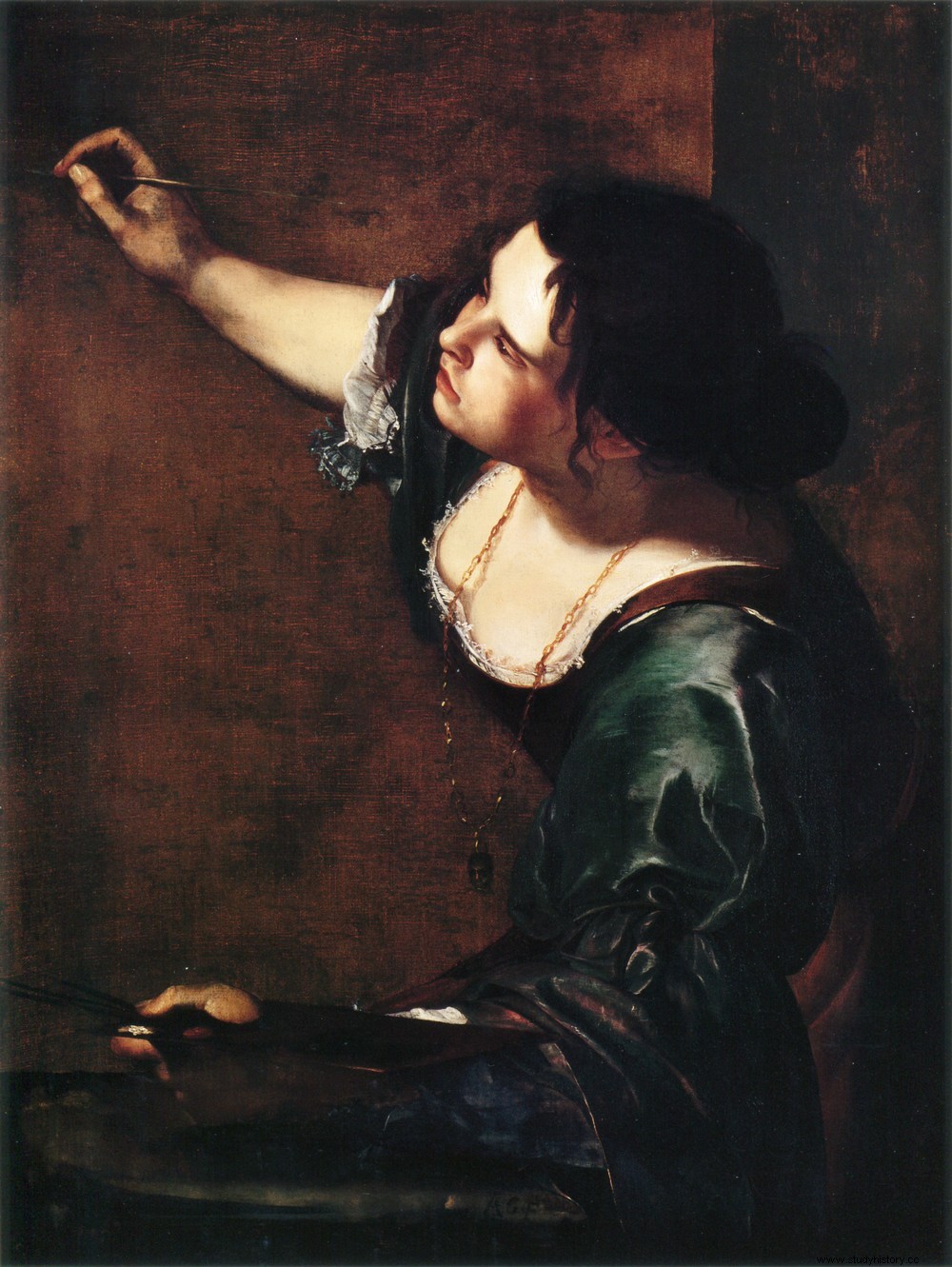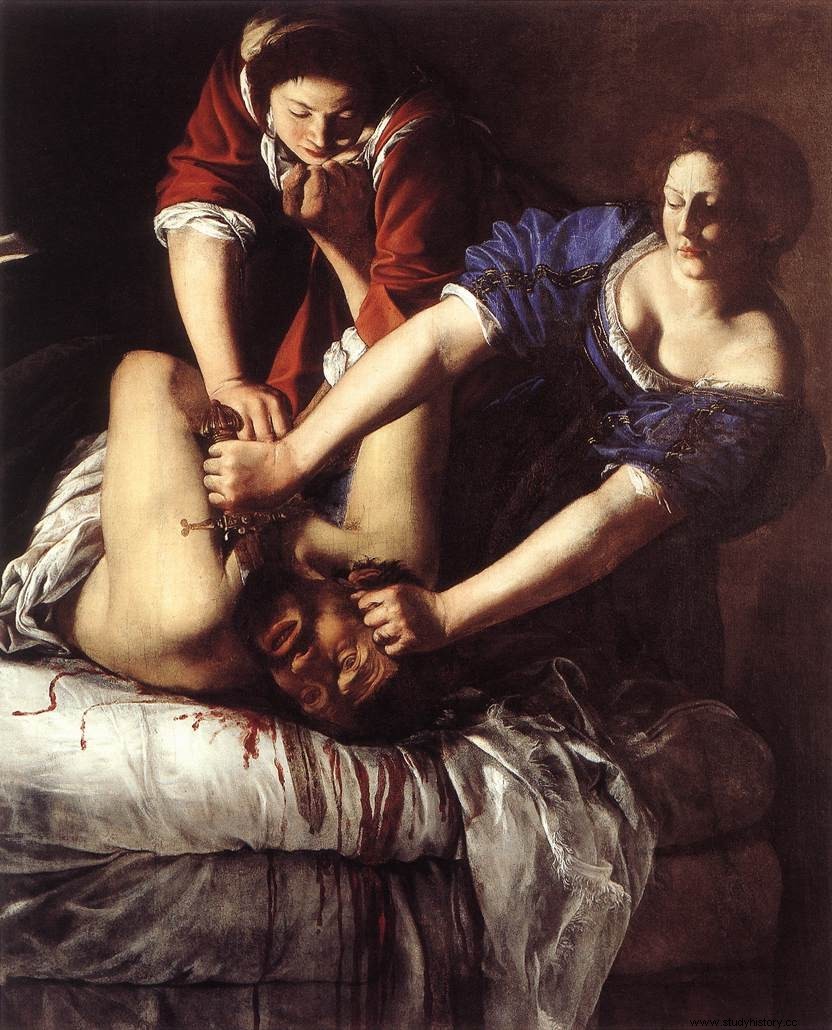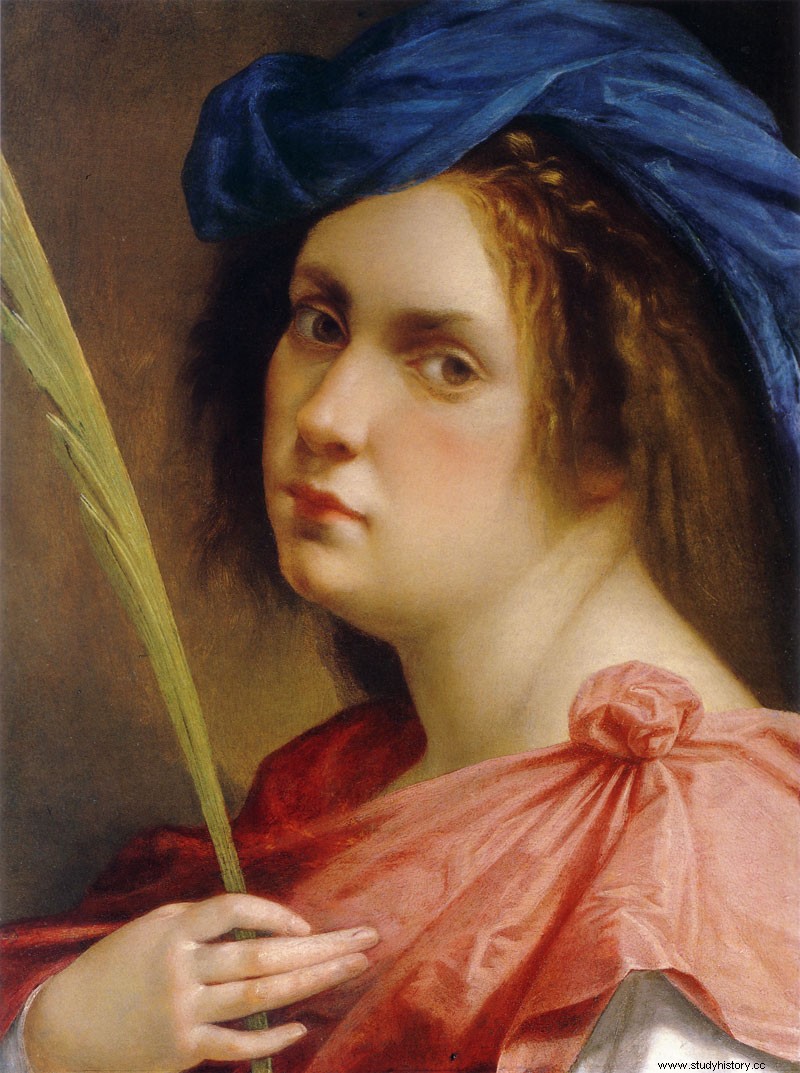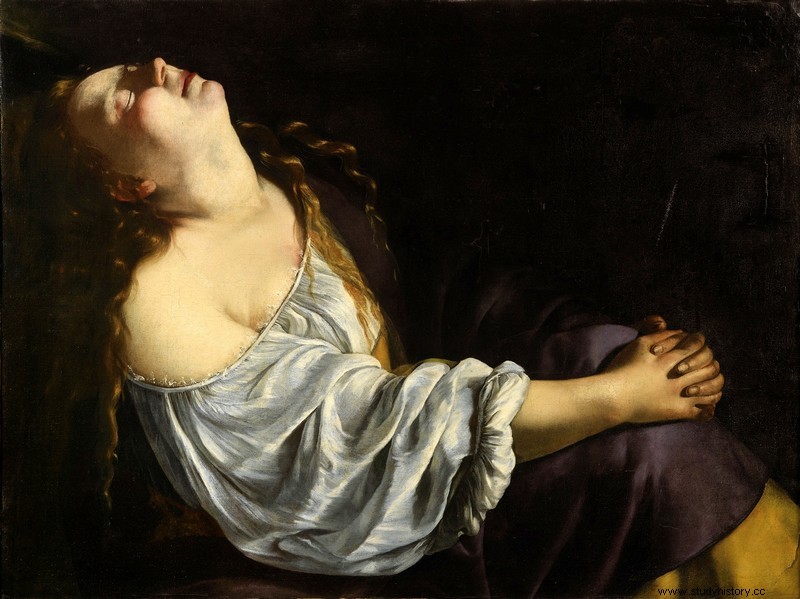Artemisia Lomi Gentileschi (1593-1652), was an Italian painter of the Caravaggio school, considered one of the first women to paint historical and religious subjects. Very talented, she met with great success in her time, and is also one of the first Baroque painters.
[WARNING:rape]
A cathartic art

Daughter of Prudentia Montone and the painter Orazio Gentileschi, Artemisia Lomi Gentileschi was born on July 8, 1593 in Rome. His father was a disciple of the Italian painter Michelangelo Merisi da Caravaggio (in French Caravaggio or Caravaggio), who revolutionized the painting of his time with great realism and the marked use of the chiaroscuro technique. Artemisia learns the art of drawing and painting from her father, and shows herself to be much more talented than her brothers. His style is directly influenced by that of Orazio, himself in the wake of Caravaggio.
At the age of 17, perhaps with the help of her father who wanted to highlight his daughter's artistic talents, Artemisia signed her first painting:Suzanne and the Elders , depicting a biblical episode in a realistic style marked by Caravaggism. She also works to resume, by accentuating their realism and their chiaroscuro, works of her father. As the teaching of Fine Arts is reserved for men, her father hires the painter Agostino Tassi to help her progress in her art, but the tutor rapes the 19-year-old young woman. The painter promises to marry his victim to protect his reputation, but he does not keep his word. Orazio then takes the case to the papal court.
The investigation lasts several months and the trial is in itself an additional ordeal for the young Artemisia, who is subjected to a gynecological examination and even torture. The painter maintains her accusations and the tutor is sentenced to one year in prison, which he will not serve. The extreme violence of the proceedings, the crudeness of the facts she is forced to relate and the methods of the court mark Artemisia and, subsequently, probably influence her art. After the rape and the trial, Artemisia will thus paint the biblical scene of Judith decapitating Holofernes. The painting is marked by the intense violence of the scene, a cathartic expression of Artemisia's desire for revenge:she has taken herself as a model for Judith, and Holofernes has the features of Tassi. In 1615, Artemisia made her self-portrait as a holy martyr. In general, his art is marked by a dramatic emphasis, a great use of darkness and the graphic violence of certain scenes.
An independent painter
After the trial, Orazio arranged for his daughter to marry the painter Pietro Antonio Stiattesi, to allow her to regain social status. The couple settled in Florence and had four children, of whom only little Prudenzia grew up. In Florence, strong in her talent, Artemisia Lomi Gentileschi was the first woman accepted into the Academy of Drawing. She frequented the artists of her time, made herself known and recognized, and obtained commissions such as the execution of a canvas intended to decorate the ceiling of the painting room of Michelangelo Buonarroti the Younger, Michelangelo's great-nephew. .
Despite her success, Artemisia struggles financially due to overspending. In 1622, she separated from her husband and returned to Rome with her daughter Prudenzia. In 1627, she had a second daughter, out of wedlock. Independent, able to support herself and raise her children, Artemisia tries to interest her daughters in painting but without succeeding. In Rome, she still enjoyed success but obtained fewer orders; she then traveled a lot, settling in particular in Venice for several years, then in Naples where she settled permanently. It was there that she obtained her first commissions for a cathedral, creating canvases dedicated to Saint January of Bénévent or at the Birth of Saint John the Baptist . She also produced many works devoted to female characters from the Bible:Judith, Mary Magdalene, Bathsheba... Recognized artist, enjoying success, and whose grace is praised, the heroines of her paintings often have her features.
In 1638, Artemisia spent a few years in London with her father, who had become painter to the court of Charles I. She collaborates with him on the decoration of a ceiling. Orazio died the following year, in the arms of his daughter who returned to Naples.
Artemisia Lomi Gentileschi died in 1653, leaving a rich and powerful work. She is considered a major artist of the Caravaggio movement.



